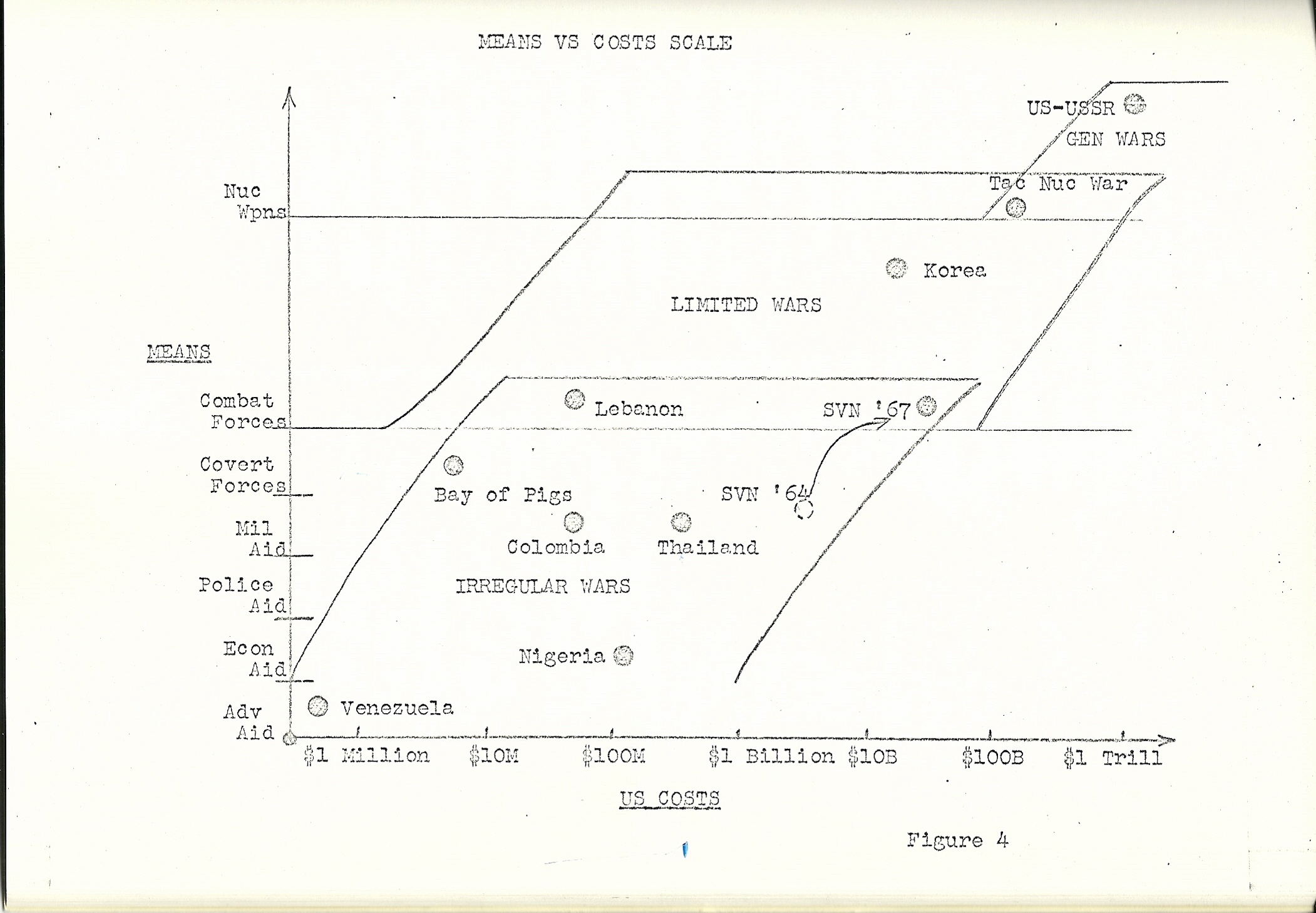My Spectrum of War Thesis
Probably the sharpest insight I got into how Insurgent War could be as important to the United States in the spectrum of war as was Conventional War came when I was trying to find a way to portray, graphically, where they each stood on the scale from guerilla insurgencies, through conventional regiment division fighting, to nuclear exchanges.
If one makes the X - vertical - scale show the 'MEANS' of such wars (ie from guerilla combat at the lowest), conventional war combat in the middle, and nuclear missiles and bombers at the 'top' end. One can then portray the Y axis as COSTS. With each war plotted out from the Y representing time from its beginning.
With Vietnam (insurgent level of Means) having already taken longer than WWII, at heavy, but prolonged, even if at a lower level of costs, and Korea (conventional means) having lasted just two years before the truce, with heavier costs, and Nuclear War, brief but very costly in its expenditure of what fissionable stockpiles were accumulated at great cost, one gets a new picture.
For the Vietnam War, projected out to 10 or more years costs MORE than the Korean War which was 2-3!
That puts the 'price' America has to pay for war in a realistic perspective, and gives counterinsurgency an important place in the Spectrum.
In my Army War College Study (Essay) I made my case why a visual 'Spectrum of War' was necessary. It was expressed in my conclusion,


As you can see, Vietnam started as an Insurgency - in the lower spectrum of war. But as it continued, it not only escalated into the Conventional (Limited) War level AND it was costing more than the Korean Conventional War!